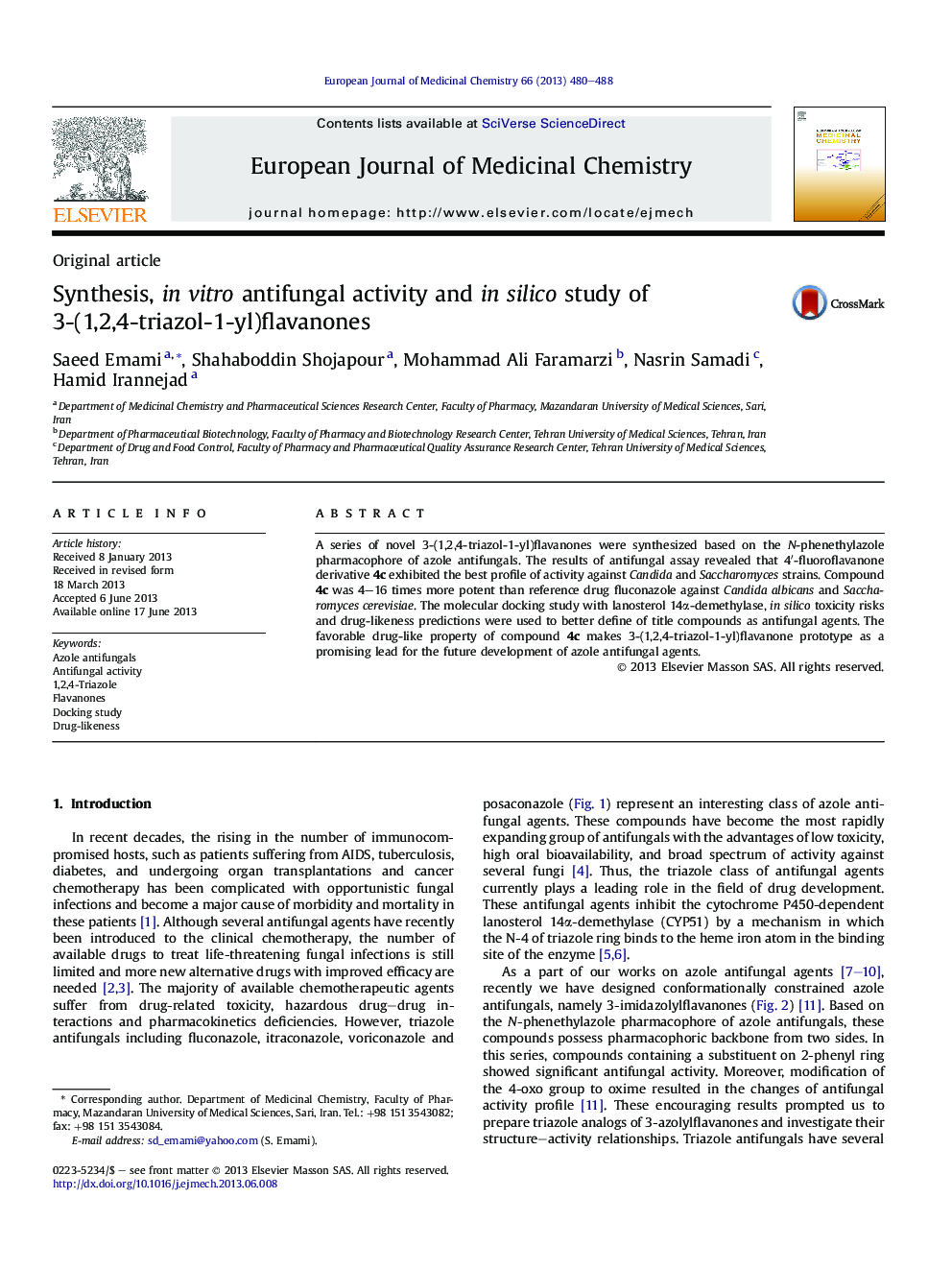| Article ID | Journal | Published Year | Pages | File Type |
|---|---|---|---|---|
| 1392744 | European Journal of Medicinal Chemistry | 2013 | 9 Pages |
•3-Triazolylflavanones were designed based on the N-phenethylazole pharmacophore.•The antifungal activity of compounds were evaluated against different fungi.•4′-Fluoro-derivative 4c exhibited the best profile of activity against yeasts.•Compound 4c was 4–16 times more potent than reference drug fluconazole.•Compound 4c had higher values of drug-likeness compared to standard drugs.
A series of novel 3-(1,2,4-triazol-1-yl)flavanones were synthesized based on the N-phenethylazole pharmacophore of azole antifungals. The results of antifungal assay revealed that 4′-fluoroflavanone derivative 4c exhibited the best profile of activity against Candida and Saccharomyces strains. Compound 4c was 4–16 times more potent than reference drug fluconazole against Candida albicans and Saccharomyces cerevisiae. The molecular docking study with lanosterol 14α-demethylase, in silico toxicity risks and drug-likeness predictions were used to better define of title compounds as antifungal agents. The favorable drug-like property of compound 4c makes 3-(1,2,4-triazol-1-yl)flavanone prototype as a promising lead for the future development of azole antifungal agents.
Graphical abstract3-Triazolylflavanones were synthesized based on the N-phenethylazole pharmacophore of azole antifungals. 4′-Fluoroflavanone derivative 4c exhibited the most potent activity against yeasts, being 4–16 times more potent than reference drug fluconazole.Figure optionsDownload full-size imageDownload as PowerPoint slide
